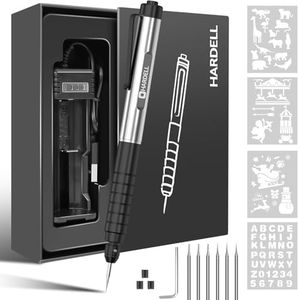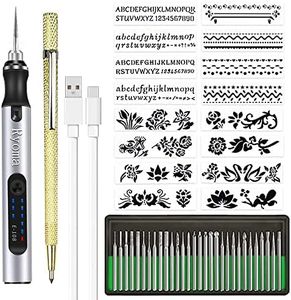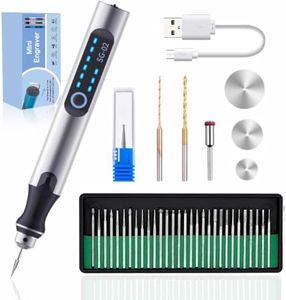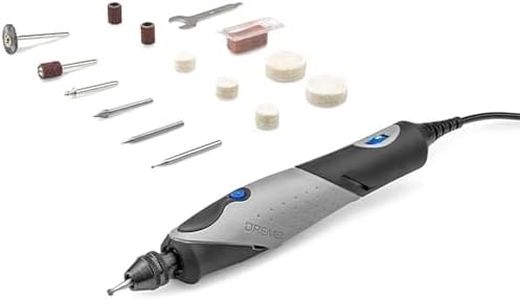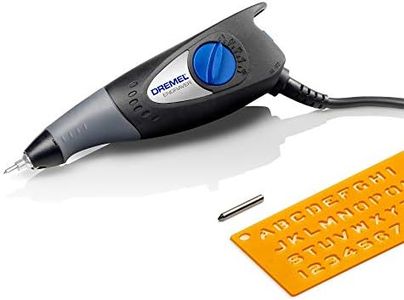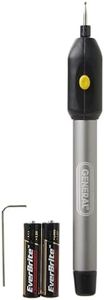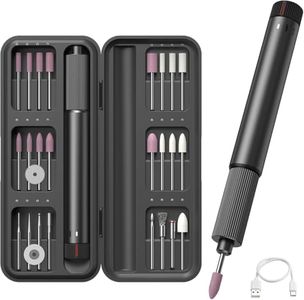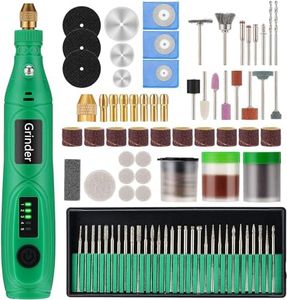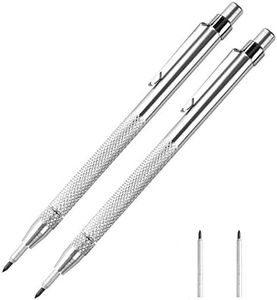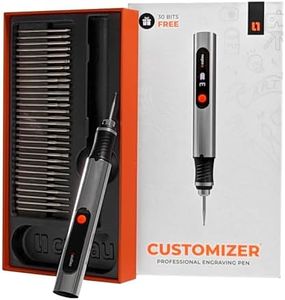We Use CookiesWe use cookies to enhance the security, performance,
functionality and for analytical and promotional activities. By continuing to browse this site you
are agreeing to our privacy policy
10 Best Engraving Pens
From leading brands and best sellers available on the web.Buying Guide for the Best Engraving Pens
Choosing the right engraving pen can make your creative or professional projects easier and more satisfying. An engraving pen allows you to mark, personalize, or design various materials like metal, glass, wood, and plastic. Before buying, think about what kinds of materials you'll be working with, how often you'll use the tool, and whether you need fine detail or broad strokes in your engraving. Focusing on key specifications will help you select a pen that fits your needs and ensures enjoyable, precise results.Power SourceThe power source of an engraving pen can be either electric (corded or cordless) or manual (hand-powered). Electric pens are generally easier to use for long projects and can provide more consistent engraving, while manual pens are lighter and can be used anywhere without worrying about batteries or cords. If you'll be doing a lot of engraving, especially on harder materials, an electric pen is usually better. For quick jobs or portability, a manual pen may suit you best. Think about when and where you'll be using the pen most often to decide.
Speed and PowerSpeed and power refer to how fast the tip moves and how much force it can apply, often measured in rotations per minute (RPM) for electric models. Higher speeds allow for smoother, deeper engraving on tough materials, while lower speeds are generally better for soft materials and detailed work. If you plan to engrave a variety of materials, a pen with adjustable speed will give you more flexibility. Consider what types of materials and what level of detail you'll use most often; this will guide you toward the right speed range.
Tip Type and SizeThe tip or bit is the part that actually makes contact with the material and does the engraving. There are different shapes (like pointed for fine lines or rounded for wider marks) and sizes. Some pens come with interchangeable tips for different effects. If you need to do detailed, artistic work, look for a fine-tip pen; for heavy marking, a thicker or more robust tip is better. Choose based on the type of engraving—fine art, labeling items, or both.
Material CompatibilityNot every engraving pen works well on every material. Some are best for hard surfaces like metal and glass, while others are good for softer materials like wood or plastic. Check the product's description for the materials it's designed to handle, and match this with your planned projects. If you want one tool for multiple surfaces, pick a pen that advertises compatibility with a broader range of materials.
Comfort and ErgonomicsComfort is important, especially if you'll be holding the pen for long periods. Look for ergonomic features like a comfortable grip or lightweight design, which can help reduce hand fatigue and improve precision. If you have small hands or any mobility issues, try to find a pen that's easy and comfortable for you to hold.
Ease of Use and ControlEase of use relates to how simple it is to operate and control the pen. Features like on/off switches, variable speed dials, and clear instructions make a pen more user-friendly. If you're a beginner, look for a pen with straightforward controls. More advanced users may appreciate more settings or adjustments.
Noise and Vibration LevelEngraving pens, especially electric ones, can produce noise and vibration. Higher noise or vibration can be uncomfortable during long sessions and might impact your precision. If you plan to use the pen frequently or in a quiet environment, look for reviews mentioning low noise or vibration. This attribute isn't always listed in the specs, so feedback from other users can help here.
